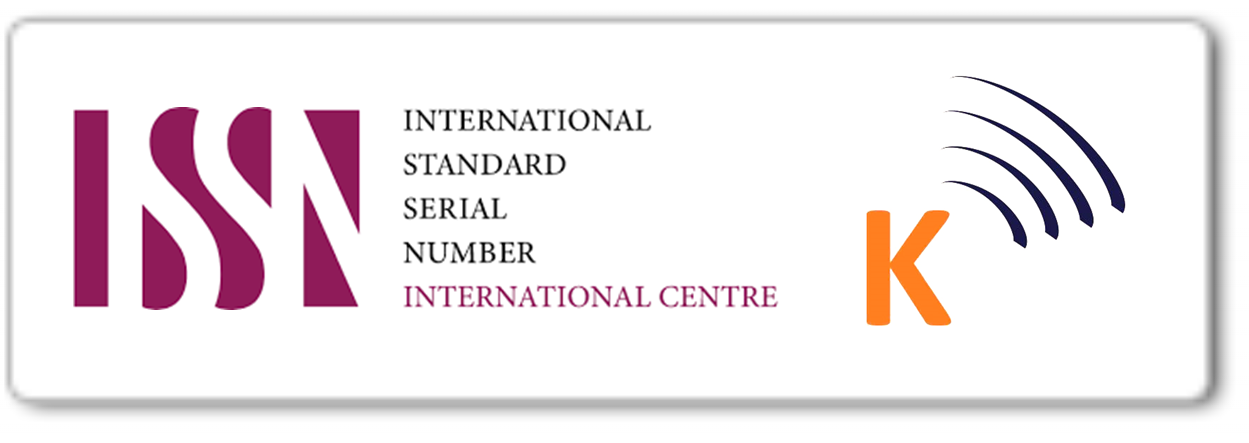YouTube as a Media for Developing English Proficiency: Experiments on Elementary School Students in Indonesia
Keywords: learning media, YouTube, english learning outcomes
Abstract
Technology continues to develop so that it causes changes in the pattern of human life without exception, also in education. This technological advancement requires teachers to develop and adjust additional competencies, one of which is using new technology in the learning process. Learning media can be interpreted as learning process aids that include subject matter information. This study aims to determine whether there is an influence of the use of YouTube videos on improving students' English learning outcomes. The method used in this study is a quantitative approach with a type of Quasi Experiment with a form of nonequivalent control group design. This research uses data analysis techniques, namely descriptive statistical analysis, analysis prerequisite tests, hypothesis tests, and n-gain analysis. The results of the hypothesis test in this study obtained the sig value. (2-tailed) 0.000 < 0.05. Thus, it can be concluded that Ha was accepted and Ho was rejected, this shows that the variables of YouTube video-based learning media have a significant effect on student English learning outcomes.
Downloads
References
Abubakar, H., & Muhammed, H. B. (2023). A systematic literature review on teaching teachers pedagogy through YouTube video technology. Journal of Digital Educational Technology, 3(1), ep2301. https://doi.org/10.30935/jdet/12839
Aslamiah, A., Abbas, E. W., & Mutiani, M. (2021). 21st-Century Skills and Social Studies Education. The Innovation of Social Studies Journal, 2(2), 82-92. https://doi.org/10.20527/iis.v2i2.3066
Batubara, H. H. (2020). Media Pembelajaran Efektif - Google Books. In Fatawa Publishing (Issue October). FATAWA PUBLISHING.
Cachón-Zagalaz, J., Sánchez-Zafra, M., Sanabrias-Moreno, D., González-Valero, G., Lara-Sánchez, A. J., & Zagalaz-Sánchez, M. L. (2020). Systematic Review of the Literature About the Effects of the COVID-19 Pandemic on the Lives of School Children. Frontiers in Psychology, 11. https://doi.org/10.3389/fpsyg.2020.569348
D’Cunha, N. M., Nguyen, D., Naumovski, N., McKune, A. J., Kellett, J., Georgousopoulou, E. N., Frost, J., & Isbel, S. (2019). A Mini-Review of Virtual Reality-Based Interventions to Promote Well-Being for People Living with Dementia and Mild Cognitive Impairment. Gerontology, 65(4), 430–440. https://doi.org/10.1159/000500040
Fang, E. F., Xie, C., Schenkel, J. A., Wu, C., Long, Q., Cui, H., ... & Woo, J. (2020). A research agenda for ageing in China in the 21st century: Focusing on basic and translational research, long-term care, policy and social networks. Ageing research reviews, 64, 101174. https://doi.org/10.1016/j.arr.2020.101174
Fauzi, S. A., & Mustika, D. (2022). Peran guru sebagai fasilitator dalam pembelajaran di kelas V sekolah dasar. Jurnal Pendidikan Dan Konseling, 4(3), 2492–2500.
https://doi.org/10.31004/jpdk.v4i3.5113
Firmadani, F. (2020). Media Pembelajaran Berbasis Teknologi Sebagai Inovasi Pembelajaran Era Revolusi Industri 4.0. Prosiding Konferensi Pendidikan Nasional, 2(1), 93–97.
Hamid, M. A., Ramadhani, R., Juliana, M., Safitri, M., Jamaludin, M. M., & Simarmata, J. (2020). Media Pembelajaran. Yayasan Kita Menulis.
Hasan, M., Milawati, Darodjat, Harahap, T. K., Tahrim, T., Anwari, A. M., Rahmat, A., Masdiana, & Indra P, I. M. (2021). Media Pembelajaran (M. P. Dr. Fatma Sukmawati (ed.)). TAHTA MEDIA GRUP.
Kohler, S., & Dietrich, T. C. (2021). Potentials and Limitations of Educational Videos on YouTube for Science Communication. Frontiers in Communication, 6. https://doi.org/10.3389/fcomm.2021.581302
Lastrijanah, L., Prasetyo, T., & Mawardini, A. (2017). Pengaruh Media Pembelajaran Geoboard Terhadap Hasil Belajar Siswa. Didaktika Tauhidi: Jurnal Pendidikan Guru Sekolah Dasar, 4(2), 87. https://doi.org/10.30997/dt.v4i2.895
Latorre-Cosculluela, C., Suárez, C., Quiroga, S., Sobradiel-Sierra, N., Lozano-Blasco, R., & Rodríguez-Martínez, A. (2021). Flipped Classroom model before and during COVID-19: using technology to develop 21st century skills. Interactive Technology and Smart Education, 18(2), 189–204. https://doi.org/10.1108/ITSE-08-2020-0137
Lestari, D. A., & Apoko, T. W. (2022). Efektivitas Video Animasi melalui YouTube terhadap Minat Belajar Bahasa Indonesia pada Siswa Sekolah Dasar. Jurnal Basicedu, 6(4), 5953–5960. https://doi.org/https://doi.org/10.31004/basicedu.v6i4.3180
Nurul Audie. (2019). Peran Media Pembelajaran Meningkatkan Hasil Belajar. Posiding Seminar Nasional Pendidikan FKIP, 2(1), 586–595.
Ozioko, O., & Dahiya, R. (2022). Smart Tactile Gloves for Haptic Interaction, Communication, and Rehabilitation. Advanced Intelligent Systems, 4(2). https://doi.org/10.1002/aisy.202100091
Phungsuk, R., Viriyavejakul, C., & Ratanaolarn, T. (2017). Development of a problem-based learning model via a virtual learning environment. Kasetsart Journal of Social Sciences, 38(3), 297–306. https://doi.org/10.1016/j.kjss.2017.01.001
Raj, A., & Tomy, P. (2023). Mobile technology as a dependable alternative to language labs and to improve listening skills. International Journal of English Language and Literature Studies, 12(1), 17–32. https://doi.org/10.55493/5019.v12i1.4702
Shadiev, R., Wu, T. T., & Huang, Y. M. (2020). Using image-to-text recognition technology to facilitate vocabulary acquisition in authentic contexts. ReCALL, 32(2), 195–212. https://doi.org/10.1017/S0958344020000038
Sondakh, D. C., & Sya, M. F. (2022). Kesulitan Pembelajaran Kosakata Bahasa Inggris Tingkat Sekolah Dasar. 1, 9–10.
https://doi.org/https://doi.org/10.30997/karimahtauhid.v1i3.7818
Sugiyono. (2016). Metode Penelitian Kuantitatif, Kualitatif dan R&D. ALFABETA CV.
Sya, M. F., Adri, H. T., Kholik, A., Sudjani, D. H., Latifah, Z. K., & Uslan. (2021). Indonesian Learning: Towards the Academic Achievement of Communicative Competence. Indonesian Journal of Social Research (IJSR), 3(3), 183–189. https://doi.org/10.30997/ijsr.v3i3.152
Sya, M. F., Anoegrajekti, N., Dewanti, R., & Isnawan, B. H. (2022). Exploring the Educational Value of Indo-Harry Potter to Design Foreign Language Learning Methods and Techniques. International Journal of Learning, Teaching and Educational Research, 21(10), 341–361. https://doi.org/10.26803/ijlter.21.10.19
Van Den Beemt, A., Thurlings, M., & Willems, M. (2020). Towards an understanding of social media use in the classroom: a literature review. Technology, Pedagogy and Education, 29(1), 35–55. https://doi.org/10.1080/1475939X.2019.1695657
Voogt, J., & McKenney, S. (2017). TPACK in teacher education: are we preparing teachers to use technology for early literacy? Technology, Pedagogy and Education, 26(1), 69–83. https://doi.org/10.1080/1475939X.2016.1174730
Weidlich, J., & Bastiaens, T. J. (2018). Technology matters - The impact of transactional distance on satisfaction in online distance learning. International Review of Research in Open and Distance Learning, 19(3), 222–242. https://doi.org/10.19173/irrodl.v19i3.3417
Wibowo, Y. R., & Prastowo, A. (2023). Tantangan Pembelajaran Tematik dalam Jaringan dengan Model Website Berbasis Youtube di Sekolah Dasar. Jurnal Pendidikan, 24(1), 1–12. https://doi.org/10.33830/jp.v24i1.3237.2023
Zayyadi, M., Supardi, L., & Misriyana, S. (2017). Pemanfaatan Teknologi Komputer Sebagai Media Pembelajaran Pada Guru Matematika. Jurnal Pengabdian Masyarakat Borneo, 1(2), 25. https://doi.org/10.35334/jpmb.v1i2.298
Copyright (c) 2023 Septian Maulana, Mega Febriani Sya, Annissa Mawardini, Ika Tri Yunianika

This work is licensed under a Creative Commons Attribution-NonCommercial-ShareAlike 4.0 International License.







